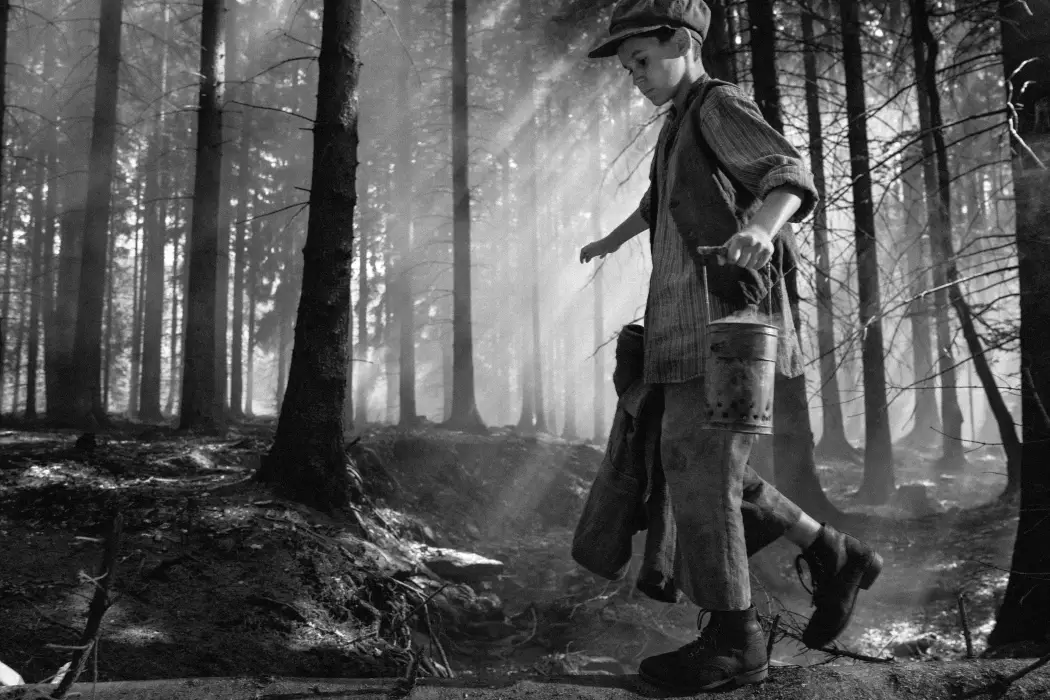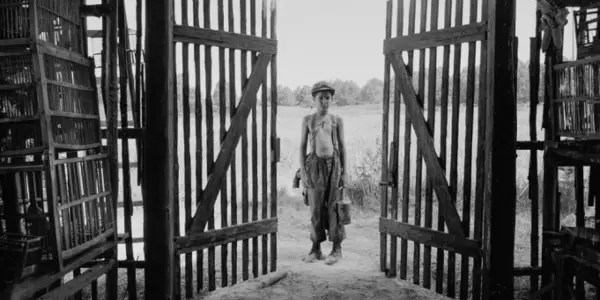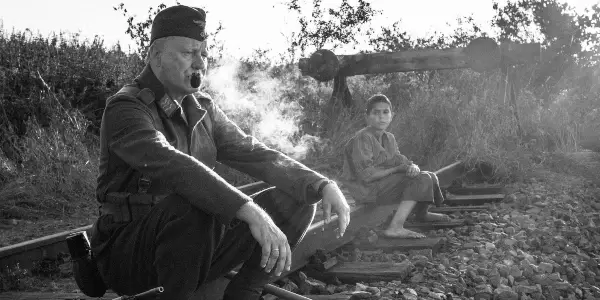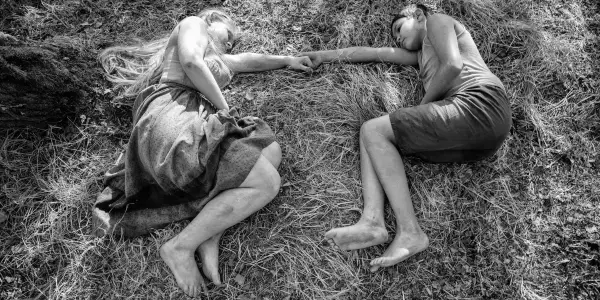THE PAINTED BIRD: The Brutality Of War Through the Eyes Of A Child

Stephanie Archer is 39 year old film fanatic living in…
There is a never a shortage of war movies, humanity at battle with itself is a constant well of perspectives and stories. And no war has provided as many viewpoints as World War II. For years, the stories have flooded through Hollywood’s gates, keeping the memory alive and lifting the stories of those who might have disappeared into obscurity.
Quiet and contemplative, yet severely brutal, The Painted Bird, from director Václav Marhoul, is the latest film to find the horrors of World War II as its backdrop. Yet, where films previously had placed viewers at the heart of war, The Painted Bird takes a new direction. Adapted from the novel of the same name by Jerzy Kosiński, here viewers will follow the unbelievable and horrendous journey of a young boy as he struggles to find his way home. The Painted Bird is not for the faint of heart, yet a film that will certainly leave an impression.
Plot
Sent to live with his aunt to escape the horrors of the Holocaust, Joska (Petr Kotlár) leaves his life in Germany and adapts to life on the farm. His parents could not save themselves, but they could save him. While hidden away, there is a brutality that still surrounds him, yet it is warded off by the gentle care of his aunt. Though like all bubbles of protection, Joska’s pops prematurely as he finds his aunt has passed, an accidental fire to the home he once saw as salvation leaving him with nothing.

With the untimely death of his aunt, Joska is left to face the world alone. As he makes his way through the countryside, his journey brings him face to face with a menagerie of individuals, each with their own demons – each with their own violence. While time spent with each character varies, the effect on Joska’s life is deep, cutting through the innocence of childhood and destroying his view of the world. As feelings of abandonment and survival slowly begin to creep into his mind, Joska grows from a boy to a man, leaving childhood behind and embracing what the world has offered him.
Painting the Bird
The brutality of The Painted Bird is instant. There is no slow transition into the brutality of war, no build-up to prepare you for what is coming. The Painted Bird opens with Joska running through the forest clutching a white ferret. In an instant, the innocence the white fur represents is engulfed in flames and burned beyond recognition. Like all wars, there is no mental preparation.
While The Painted Bird is a brutal film, you never see much of the war itself. Rather, viewers are given representations and the mindsets of a nation and its citizens. While some display violence towards Joska through pure hate, others are brutal to him because of the violence he represents. Where many World War II films show the direct correlation, a soldier’s behavior towards a Jew, The Painted Bird is heartbreaking in its representational treatment by the masses to a small child.

While brutal, The Painted Bird is a beautifully composited film, with breathtaking shots held in place by a strong eye and the deep contrast of the black and white film undeniably captivating. Though as beautiful as this film is, you need a strong stomach to work your way through to the end. The Painted Bird is a brutally violent film, at times too much to handle. There is a sharp whiplash created by the contrast of the beauty of the shot and the brutality of the action.
Both the beauty and brutality are brought to life more through visuals than through sound. The Painted Bird is a film where dialogue is seldom used. Characters speak only when necessary for the film or scene. Many times communicating through nonverbals – action speaks loudest here. The strength of communication relies on the ability of the actors even more. Body language is at its utmost importance and each member of the cast delivers it with perfection.
The Representations Of War
As Joska is searching for a home, he comes across unimaginable horrors along the way. While the world is raging in the background, there is a representation of the fears the world is experiencing in the innocence of this boy. Each of these individuals Joska comes across represents some aspect of war, sin, evil, or emotion. There is a brutality in each of these characters and within their explorations. Like the war, it only gets worse before it gets better with each new interaction Joska experiences.

Paranoia and superstitions are brought to their full fruition within a town and its witch doctor. They see Joska as the devil, an evil that should be drowned immediately lest it brings poor fortune to the town. Violence finds its representation in a man who beats his wife, blinded by rage and suspicion. Lust too finds itself in the sexual desires of all ages, bringing many times irreconcilable heartbreak.
But The Painted Bird does not only bring representations of horror and evil, it flirts with glimmers of hope and resilience. Not every one that Joska meets is horrific, instead of giving him the first shed of light since the passing of his aunt, showing that even in a world of hate and darkness, there are those who will go one step further. There are those that will protect and enlighten. In war, there is the hope of freedom, success, and of survival – something we all need to keep going.
Conclusion
In its simplistic form, The Painted Bird is a coming of age story. Joska’s transition from childhood to adulthood happens with each interaction and push forward. Where he begins his journey immersed in innocence and compassion, it slowly transforms into pure survival and perceived manhood.
Many will struggle to stay with Joska and see his journey to completion. The brutality and violence of the film will be a turn off for many. Yet, if you can stay to the end, if you can experience the horror, providing the gasps and outcries that Joska never expresses himself, you will find a film deeply rooted in the need to keep pushing forward.
Just as many Jews and citizens were displaced by the war, so too is Joska. He, like many, is on the journey to redefine what “home” is – and if there was a “home” to begin with. While The Painted Bird’s brutality will defer many from adding this to their home collections, it is an experience to behold at least once.
Have you seen The Painted Bird? What did you think? Let us know in the comments below!
The Painted Bird will be released VOD July 17, 2020.
Watch The Painted Bird
Does content like this matter to you?
Become a Member and support film journalism. Unlock access to all of Film Inquiry`s great articles. Join a community of like-minded readers who are passionate about cinema - get access to our private members Network, give back to independent filmmakers, and more.













